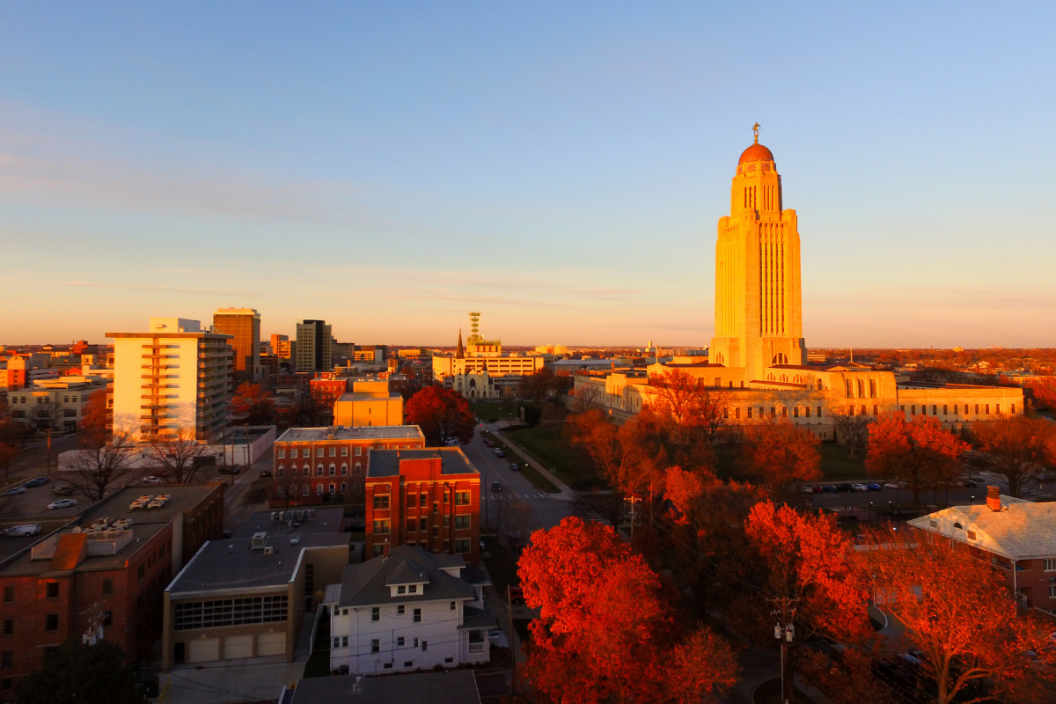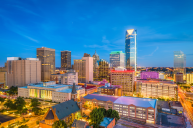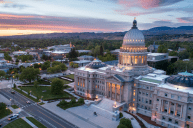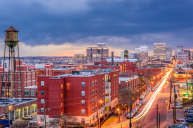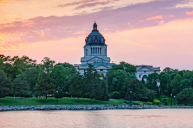When you think of the United States of America, Nebraska may not be the first state you think of. But this Great Plains state has a lot to offer visitors. Here's why you should visit Lincoln, the capital of Nebraska.
What Is The Capital Of Nebraska?
https://www.instagram.com/p/CKCOZAyBi75/?utm_source=ig_web_copy_link
The capital city of the state of Nebraska is Lincoln. It's the state's second-largest city in Lancaster County, about an hour southwest of Omaha and three and a half hours from Kansas City.
Nebraska is in the expansive Midwestern region of the United States of America. It is bordered by Iowa to the east, Missouri to the southeast, Kansas to the south, Colorado to the southwest, Wyoming to the west, and South Dakota. Interestingly, it is the only triply landlocked U.S. state.
How Lincoln Became The Capital City
https://www.instagram.com/p/CIgXXlfh00-/?utm_source=ig_web_copy_link
Nebraska became a U.S. state in 1867, two years after the Civil War and 13 years after the U.S. Congress opened the territory for settlement. The same year, the Nebraska Capitol Commission was created to help Nebraskans find the location for a Capital City. This organization oversees the preservation, maintenance, and operations of the Nebraska State Capitol Building.
In 1867, the Nebraska Legislature passed a law that removed Omaha as the Capital City. That is where the Capitol Commission came in.
The capital commission decided Lincoln, NE, would be the capital city and home to Bertram Goodhue's new capital building. Originally called the village of Lancaster, the city of Lincoln was founded in 1856 and renamed after President Abraham Lincoln when it became the latest state capital city in 1869.
10 Reasons To Visit Lincoln, Nebraska
1. The Nebraska State Capitol
https://www.instagram.com/p/CLwsCdEniFI/?utm_source=ig_web_copy_link
Did you know that the state of Nebraska is the only state in the US that does not practice a bicameral legislature? The Nebraska Legislature has one house called the Unicameral with senators. The state legislature meets in the State Capitol Building, the first state capitol to design a functional tower. The building was designed by New York architect Bertram Grosvenor Goodhue in the 1920s and is known for the sower, the 19.5" finial atop the state capitol building's gold-tiled dome.
2. University of Nebraska State Museum
https://www.instagram.com/p/Bys8dOXny5X/?utm_source=ig_web_copy_link
Located in Morrill Hall on the University of Nebraska-Lincoln City Campus, this natural history museum was established in 1871 and boasted four floors of interactive exhibits. Spanning 70,000 square feet, this museum gives into the state of Nebraska's biological diversity, the Native American Heritage, and incredible fossils that will fascinate people of every age.
3. The Civil War Veteran Museum
https://www.instagram.com/p/BKdn_F8gemT/?utm_source=ig_web_copy_link
Although it is not in Lincoln proper, this museum is worth mentioning as it sits just one hour away in Nebraska City. Did you know that there were over 100 Grand Army of the Republic Halls in the state at one time and that only four remain today? Built in 1894, The Civil War Veterans Museum is the only one in Nebraska territory.
4. Downtown Lincoln
https://www.instagram.com/p/CDwnkQXBf-c/?utm_source=ig_web_copy_link
RELATED: 10 Reasons to Visit Juneau, Alaska
When you visit the city, you will definitely spend most of your time in Downtown Lincoln. We already mentioned the Nebraska Capitol statehouse and well talk about the Lincoln Memorial below. Still, the downtown district offers even more museums, eateries, and attractions for you to explore. Take the kids to the Children's Museum or enjoy a tour of the Nebraska History Museum.
5. Native American History
https://www.instagram.com/p/CLFBUxnBAHH/?utm_source=ig_web_copy_link
According to https://native-land.ca/, the land that is now known as Lincoln, Nebraska is home to the Jiwere, Pâri (Pawnee), and O?héthi ?akówi? Native tribes. The Center for Great Plains Studies is a branch of the University of Nebraska committed to increasing the appreciation for the Native American History, cultures, art, and peoples that call Nebraska home. Native American sites near Lincoln include the Inner Maker Art Village and the Stuhr Museum of the Prairie Pioneer.
6. Lincoln Memorial
https://www.instagram.com/p/CN6HRCUA1bc/?utm_source=ig_web_copy_link
Abraham Lincoln, the leader in the new Republican party at the time, became a political figure in Nebraska when the state moved from being the Nebraska territory to becoming a statehood. He vehemently opposed the Kansas-Nebraska act of 1854, which would extend slavery into the region. Lincoln really took the political show nationwide when he debated Stephen Douglas in 1858 and took his seat of government. After that, he ran for president and won with a sweeping victory. When you visit Lincoln, you can see the remarkable Lincoln Memorial in the historic Council Bluffs district.
7. Platte River State Park
https://www.instagram.com/p/CNlnit1h7ly/?utm_source=ig_web_copy_link
Nestled between Lincoln and Omaha, the Platte River State Park offers a beautiful place to get away for a few days in nature. Camp, hike to the waterfall, biking alongside the river, and climb to the top of one of the observation towers that present marvelous views of the Platte River Basin.
8. Missouri River
https://www.instagram.com/p/CGTJ3nBnAgG/?utm_source=ig_web_copy_link
In Nebraska, the Missouri River flows approximately 400 miles along the state's eastern border. People from all over the state flock to the rushing waters to partake in excellent fishing and boating opportunities. Although it's a few-hour drive east of the city at the state's border with Iowa, it is well worth visiting to enjoy some time outdoors.
9. Sunken Gardens
https://www.instagram.com/p/COMWDEmB-a6/?utm_source=ig_web_copy_link
The Sunken Gardens was once on the list of "300 Best Gardens to Visit in the United States and Canada" by National Geographic's "Guide to Public Gardens," and visitors can see why. First developed in 1930 and originally a neighborhood dumpsite, the Sunken Gardens is now an integral feature of the city's attractions.
10. Historic Haymarket
https://www.instagram.com/p/BxGT-RUpv_M/?utm_source=ig_web_copy_link
Lincoln's vibrant and thriving district offers a wide array of local eateries, unique shopping establishments, and fun nightlife in refurbished warehouses from the 1800s. Sights include Iron Horse Park, the "Iron Horse Legacy" mural, a restored CB&Q steam engine, and an 1890s water tower fountain.
Have you visited the cultural anchor of Nebraska? Share your trip on our Wide Open Roads Facebook!
